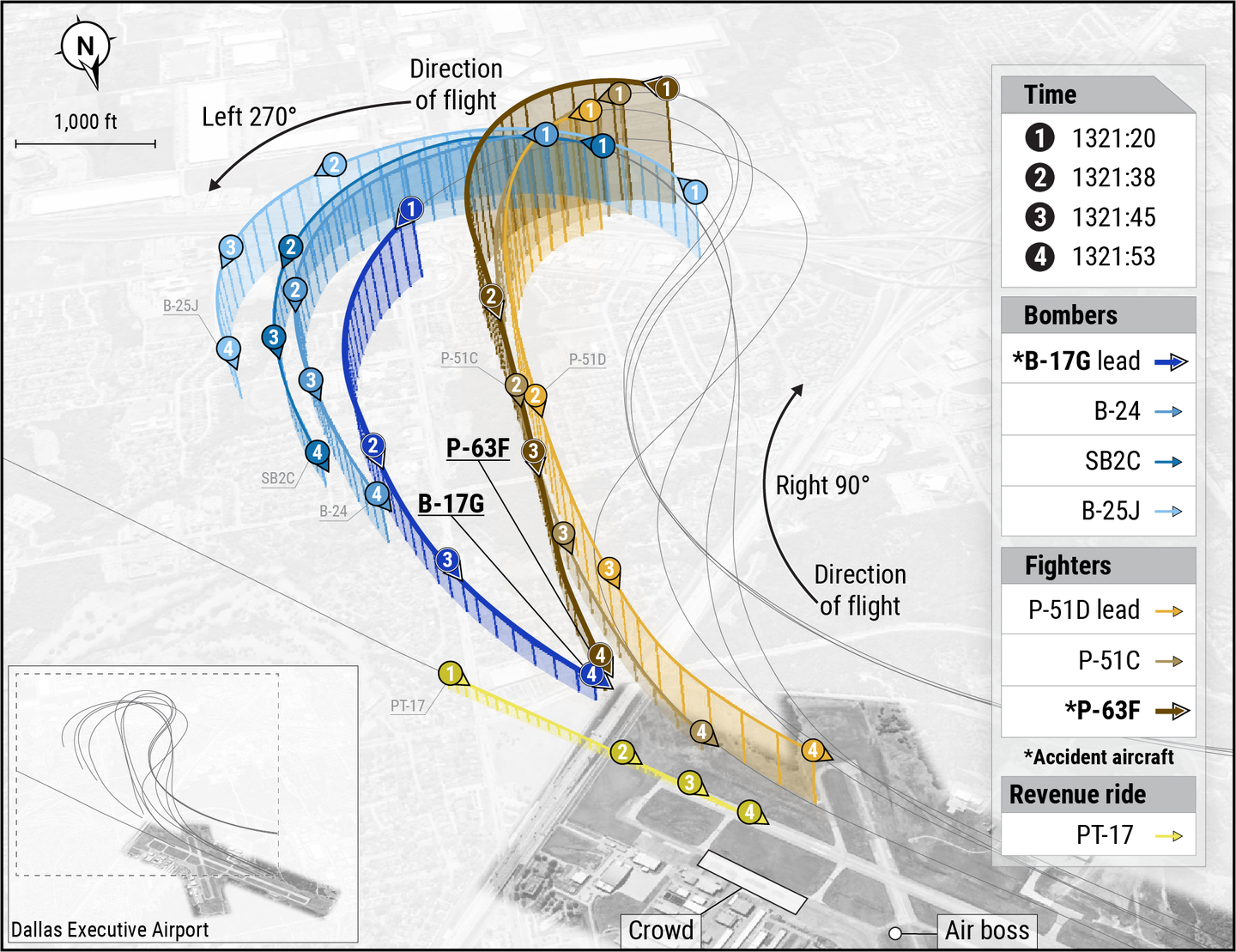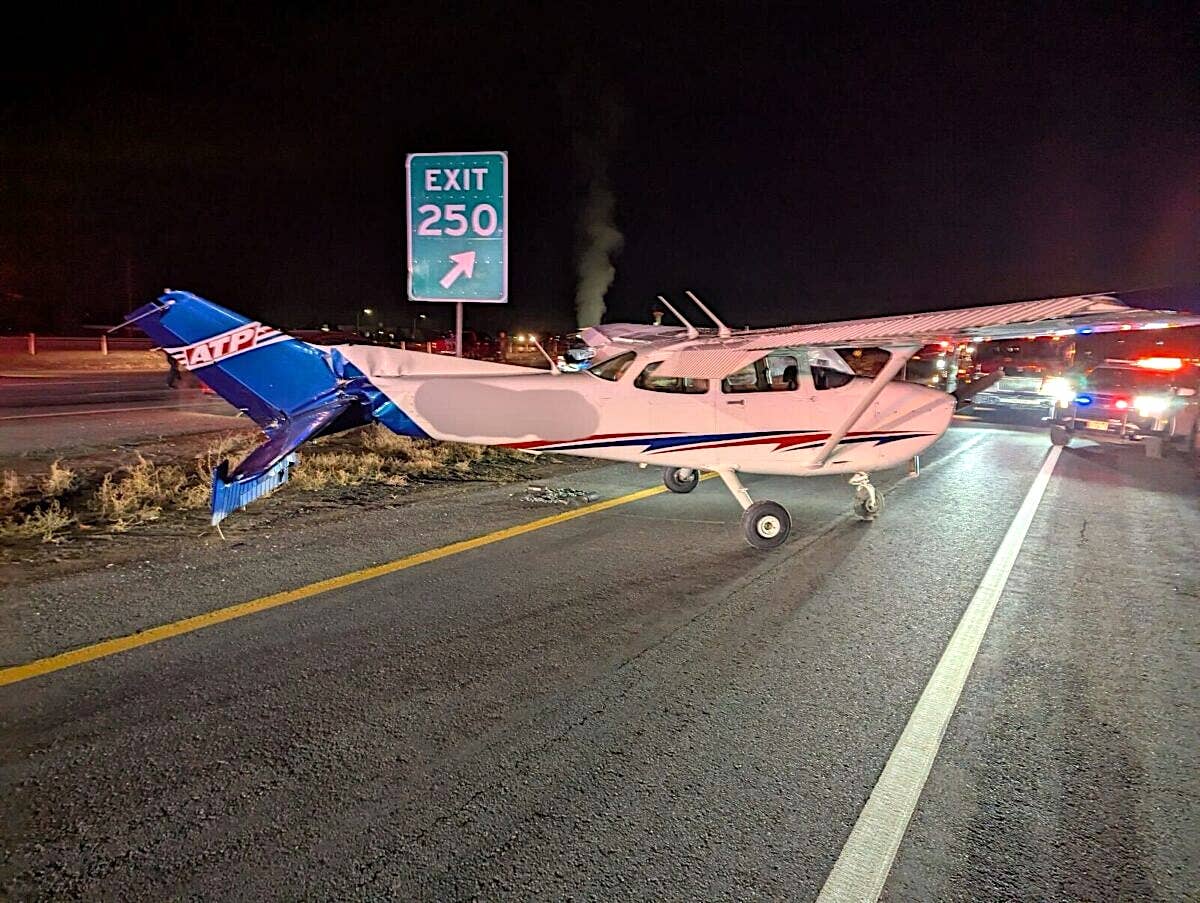Coping with Single-Pilot IFR
One of the toughest challenges we general aviation pilots face is flying single-pilot IFR. It’s so tough, in fact, that the airlines and commuters don’t even attempt it. But according to AVweb editor and SPIFR-maven Mike Busch, modern technology and tight cockpit discipline can go a long way to compensate for not having a copilot. Mike reviews the most common screwups that pilots make when flying SPIFR, and offers some concrete suggestions for avoiding them.

 Single-pilot IFR is a subject near and dear to my heart,because so much of my own flying falls into that category. Back in 1966 when I startedflying serious IFR in single-engine aircraft, a relatively small percentage of privatepilots were instrument-rated, and most considered single-pilot IFR (SPIFR) to be a riskyproposition, something on the order of low-altitude aerobatics.
Single-pilot IFR is a subject near and dear to my heart,because so much of my own flying falls into that category. Back in 1966 when I startedflying serious IFR in single-engine aircraft, a relatively small percentage of privatepilots were instrument-rated, and most considered single-pilot IFR (SPIFR) to be a riskyproposition, something on the order of low-altitude aerobatics.
Boy, have things changed in three decades! Nowadays, the majority of pilots haveinstrument tickets, and SPIFR is considered absolutely routine.
But it's still a real handful. A pilot flying SPIFR is considerably more likely toscrew up than one who has a copilot to help with the workload and catch mistakes.
I was rereading an 18-year-old study of general aviation SPIFR operations the otherday, prepared by Batelle Laboratories under contract to NASA's Aviation Safety ReportingSystem office (back in the days that NASA actually had budget for stuff like that). Thestudy analyzed a bunch of SPIFR operational problems that had been reported on ASRS formsby general aviation pilots and controllers, and analyzed what sort of problems were mostcommon. It's an interesting piece of research whose conclusions are undoubtedly just asvalid today as they were when the study was done in 1981.
Sorry, Hours Don't Count
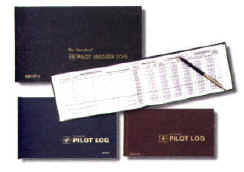 The Battelle/NASA study analyzed about five years' worth of ASRS reports ofoperational problems involving aircraft being flown by a single pilot on an IFR flightplan in IMC. Perhaps the most astonishing conclusion of the study was that the operationalproblems being experienced during SPIFR showed no correlation with the experience (orinexperience) of the pilots involved.
The Battelle/NASA study analyzed about five years' worth of ASRS reports ofoperational problems involving aircraft being flown by a single pilot on an IFR flightplan in IMC. Perhaps the most astonishing conclusion of the study was that the operationalproblems being experienced during SPIFR showed no correlation with the experience (orinexperience) of the pilots involved.
More than half of the operational problems studied were reported by pilots who had over2,000 hours total time and over 50 hours during the preceding 90 days. A chi-square testof statistical significance was performed, and showed no significant difference in thetypes of operational problems experienced by high-time vs. low-time pilots, or by pilotsof larger aircraft (over 5,000 lbs.) vs. smaller aircraft.
The study concluded that effective remedies to the problems faced by general aviationpilots flying SPIFR do not lie in more training or experience, but rather in changing thenature of the SPIFR task itself through improved cockpit systems and procedures.
SPIFR Stupid Pilot Tricks
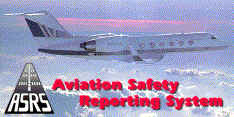 Mostof the Battelle/NASA report was devoted to classifying and analyzing the various kinds ofoperational problems that occur most often during SPIFR.
Mostof the Battelle/NASA report was devoted to classifying and analyzing the various kinds ofoperational problems that occur most often during SPIFR.
The most frequent category of occurrences that prompted ASRS reports were classified as"pilot allegations of inadequate service by ATC," and constituted 30% of theoccurrences studied. The high incidence of this category of occurrences might indicatethat pilots are more willing to fire off an ASRS form to complain about what they perceiveto be bad service from ATC than they are to confess their own screwups.
The report analyzed each of the reports in this category to determine whether thecomplaining pilot's expectations about the performance of air traffic controllers and thesystem were reasonable or unreasonable. It concluded that the pilots' expectations werereasonable about three times out of four.
The remaining 70% of the occurrences studied represented what the FAA would term"pilot deviations." It's interesting to examine the various kinds of screwupsthat were reported in SPIFR operations, starting with the most common:
Altitude Deviations
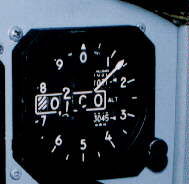 The hands-down winner was altitude deviations, which accounted for43% of all reported pilot deviations. The study broke down these altitude deviations intofive subcategories and analyzed their frequency:
The hands-down winner was altitude deviations, which accounted for43% of all reported pilot deviations. The study broke down these altitude deviations intofive subcategories and analyzed their frequency:
overshot assigned altitude (68%)
undershot assigned altitude (8%)
failed to maintain assigned altitude (4%)
failed to change altitude (8%)
changed altitude prematurely (12%)
As you can see, altitude overshoots accounted for the overwhelming majority of altitudedeviations. Overshoots occurred when pilots were climbing or descending to an assignedaltitude and sailed right through the altitude without leveling off.
Why did these overshoots and other altitude deviations occur? Two primary reasons: (1)the pilot got distracted by something else and forgot to level off at the assignedaltitude, or (2) the pilot misunderstood or misinterpreted the altitude assigned by ATC.The report suggested that about one-third of the altitude deviations were due toforgetfulness, and the other two-thirds to misunderstood clearances.
The misunderstood altitudes were largely attributed by the Battelle/NASA researchers asthe result of "pilot mind-set" where the pilot apparently selected an altitudeother than the one assigned by ATC, based either on preconditioned expectations or asubsequent intervening event. The report broke these down as follows:
Pilot used altitude assigned to another aircraft rather than assigned altitude (48%).
Pilot used flight-planned altitude rather than assigned altitude (8%).
Pilot used altitude requested rather than assigned altitude (8%).
Pilot used altitude habitually expected rather than assigned altitude (4%).
So it appears that the overwhelming majority of misunderstood altitudes were the resultof pilots acting on clearances intended for another aircraft.
What can we do to avoid such altitude busts? It looks to me as if simplyadopting three defensive measures would eliminate the vast majority of them:
Never act upon climb or descent clearance ="http:> unless you're absolutely, positively, 100% certain that the clearance was meant for you and not another aircraft. If there's even the slightest doubt, query ATC before acting: "verify that altitude was for N12345?"
Install an altitude alerter in your aircraft. Excellent ones are available for as little as $500, and some do not require permanent installation and are suitable for renter-pilots. In my experience, a good altitude alerter is worth its weight in gold for SPIFR. The web sites for Airsport Corp. and Icarus Instruments, Inc. are good places to start.
When ATC assigns you a new altitude, dial it into your altitude alerter immediately, and then key your mic and read back the altitude displayed in the alterter window. That procedure makes it impossible for you to read back a correct altitude but dial in an incorrect one. If you don't have an alerter, dial your altitude into something (in my pre-alerter days, I used to use my rotable ADF compass card as an altitude reminder), or write it down on a post-it note and then read back what you wrote.
Improperly Flown Approaches
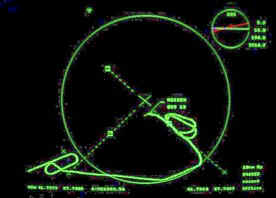 The second most common cause of reported pilot deviationincidents were improperly flown instrument approaches, which accounted for about 21% ofthe SPIFR pilot screwups. The report stressed that the instrument approach is generallythe most workload-intensive phase of an IFR flight, and that the consequences of animproperly flown approach are likely to be more serious than almost any other sort ofpilot screwup. In most of the reported cases, radar assistance was available and ATC wasresponsible for bailing the errant pilot out of trouble.
The second most common cause of reported pilot deviationincidents were improperly flown instrument approaches, which accounted for about 21% ofthe SPIFR pilot screwups. The report stressed that the instrument approach is generallythe most workload-intensive phase of an IFR flight, and that the consequences of animproperly flown approach are likely to be more serious than almost any other sort ofpilot screwup. In most of the reported cases, radar assistance was available and ATC wasresponsible for bailing the errant pilot out of trouble.
There was no obvious correlation with the type of approach flown. Fully half of themessed up approaches reported involved ILS approaches, which are generally considered tobe the easiest to fly correctly.
Lack of positional awareness by the pilot was a factor in many of the reports — forexample, flying a divergent heading that never intercepts the final approach course, orintercepting the localizer but failing to descend on the glideslope and overflying theairport.
Another common error was improper and unexpected course reversals — the most frequentscenario was that the pilot decided to fly a procedure turn when ATC expected astraight-in approach. In one rather dramatic report, a pilot flying the Runway 27L ILS atChicago O'Hare made two 360-degree turns on final, resulting in ATC having to scatterseveral transport aircraft who were flying parallel ILS approaches to Runway 27R!
The probability of pilot screwup appeared to be particularly high on second- orthird-try approaches after the pilot had missed one or more previous attempts.
What can we do to avoid messing up instrument approaches? Here are somesuggestions: 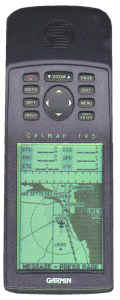
Use a GPS-driven moving map to help provide positional awareness during approaches. If you don't care to spring for a pricey panel-mounted unit, a $500 yoke-mounted handheld will do the job nearly as well. With today's amazing GPS/map technology, there's absolutely no excuse for not knowing exactly where you are at all times.
Use your altitude alerter (you do have one, don't you?) to prevent inadvertent descent below minimums. On a precision approach, use the alerter's DH feature to provide an aural and visual warning when you reach decision height. On a non-precision approach, dial each successive step-down altitude into the alerter just prior to starting each descent. Busting minimums can ruin your whole day.
Never make a procedure turn unless you're darn sure the controller is expecting it. In today's radar-saturated ATC environment, procedure turns are very much the exception rather than the rule. You should not fly a procedure turn if (a) the approach plate says "NoPT" or "procedure turn NA"; (b) if you received radar vectors to the final approach course or were cleared for a straight-in approach; or (c) if you start the approach from a holding pattern on the final approach course.
Think very carefully before attempting a second-try approach after missing the first attempt. In most cases, the juice just isn't worth the squeeze. You probably missed the first approach for one of two reasons: either the weather was below minimums, or you were too tired (or rusty) to fly the approach accurately. In either case, it's usually a lot better to divert to an alternate where the weather is better.
Heading Deviations
Heading deviations were nearly tied with approach screwups, accounting for about 19% ofreported pilot errors in the SPIFR study. You might expect that the cause of headingdeviations would be similar to those of altitude deviations, but the researchers concludedthat the "mind-set phenomenon" did not emerge as a likely cause for most headingdeviations.
The lion's share of heading deviations — nearly 70% — occurred during the departurephase of the IFR flight; 20% occurred during approach or missed-approach.
44% of the heading deviations were classified as "heading excursions,"meaning that the pilot wandered off the assigned heading. Another 19% involved"heading reversals" — flying the reciprocal of the assigned heading. Yetanother 19% involved the pilot's failure to turn to an assigned heading. A few involvedpilots turning right when they should have turned left, or vice versa.
What can we do to eliminate these heading deviations?
If you don't already have an HSI or DG with a heading bug, install one. A heading bug makes it more difficult for you to forget an assigned heading, to wander off the assigned heading, or to accidentally turn to the reciprocal of the assigned heading. Nowadays, vacuum-driven DGs with heading bugs are available at very reasonable prices.
If you have an autopilot with a heading-hold feature, use it, particularly any time your attention is diverted.
When ATC assigns you a heading to fly, set your heading bug immediately, and then key your mic and read back the heading shown by the bug. That procedure makes it impossible for you to read back a correct heading but dial in an incorrect one. If you don't have a heading bug, write it down on a post-it note and then read back what you wrote.
Once you've set your heading bug to the assigned heading, it's obvious which is the shorter way to turn to that heading. If the controller cleared you to turn the opposite direction, confirm this with ATC before doing it: "verify you want N12345 to turn the long way around to heading 315."
Position Deviations
Position deviations accounted for about 10% of the reported SPIFR pilot deviations. Aposition deviation occurs when the aircraft winds up somewhere other than where ATCexpects it to be. For example, "N12345, I show you four miles south of the airwaycenterline. Turn thirty degrees left to re-intercept."
Almost all of the reported position deviations occurred during the cruise phase of theflight, mostly while out of radar contact. In most cases, the pilot was not aware ofwandering off-course until notified of the deviation by ATC.
There are two obvious remedies for avoiding such SPIFR position deviations:
Use a GPS-driven moving map to help provide positional awareness. Once again, a $500 yoke-mounted handheld will do the job just fine.
If you have an autopilot with a nav-track feature, use it, particularly any time your attention is diverted.
Loss Of Control
Just under 5% of the reported pilot deviations under SPIFR involved loss of aircraftcontrol, but obviously such occurrences in IMC can have dire consequences and must betaken very seriously. Surprisingly, the pilots involved in the reported loss-of-controlsituations were all relatively high-time pilots.
The majority of loss-of-control episodes involved pilots who got distracted from JobOne: Fly The Airplane. One report involved a pilot on departure who looked down to retunea VOR receiver, only to find himself in a well-developed steep turn by the time he lookedback up. Another involved a pilot who was preoccupied with a screaming infant passengerand failed to notice that his autopilot had disconnected.
Distractions weren't the only cause, however. One report involved a pilot who attemptedan instrument approach in rain and turbulence after losing his vacuum pump. Anotherinvolved a flight instructor who almost lost it on departure due to a suspected waketurbulence encounter.
Here are a couple of suggestions for avoiding such loss-of-control situations:
 Engage the autopilot whenever you need to divert your attention to non-attitude-flying tasks, such as tuning radios or reading a chart or plate. But monitor autopilot function frequently, and make sure that the audible autopilot disconnect alarm is working.
Engage the autopilot whenever you need to divert your attention to non-attitude-flying tasks, such as tuning radios or reading a chart or plate. But monitor autopilot function frequently, and make sure that the audible autopilot disconnect alarm is working.
Follow the lead of all major airlines by establishing and enforcing a "sterile cockpit rule" during the departure and approach phases of the flight. Inform your passengers that you can't talk to them during these high-workload phases.
What Have We Learned, Class?
Several recurring themes appear throughout this discussion and are worth reiterating:
Use a GPS-driven moving map to help maintain positional awareness. With today's inexpensive technology, there's no excuse for not knowing exactly where you are at all times.
Use "reminder" devices such as an altitude alerter and heading bug. If you don't have those (and they're highly recommended), find some substitute like a stick-on altitude reminder, the rotable compass card on your ADF, or a post-it note.
When ATC gives you a new altitude, heading or frequency, dial it in first, then read back what you dialed in. If you read back first and dial in later, you run the risk of dialing in the wrong number (with no copilot to catch your error).
Don't be ashamed to use your autopilot, especially when your attention is diverted from the flight instruments for any reason. Airline pilots fly on autopilot 99.44% of the time (and they have copilots).
If you have the slightest doubt about an ATC clearance — or if there's any chance it might have been intended for another aircraft — always ask for verification before acting. Never assume you know what the controller said unless you heard every word clearly. Some pilots are embarrassed to ask ATC for a repeat. Don't be.
If you miss the approach at your destination, go somewhere else where the weather is decent and sort things out on the ground. Too many pilots have bought the farm on second-try approaches. It's usually a sucker bet.
Reminds Me Of A Story...
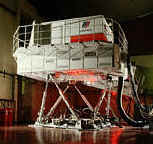 While writing this article, I couldn't help recall a three-day recurrenttraining session at FlightSafety International a few years ago. I try to go through suchtraining two or three times a year, and about half the time, I find myself paired up withanother twin Cessna pilot as a partner in the simulator. Over the years, I've probablylearned as much from watching other pilots deal with the challenges of flying the sim as Ihave from my own left-seat sim time.
While writing this article, I couldn't help recall a three-day recurrenttraining session at FlightSafety International a few years ago. I try to go through suchtraining two or three times a year, and about half the time, I find myself paired up withanother twin Cessna pilot as a partner in the simulator. Over the years, I've probablylearned as much from watching other pilots deal with the challenges of flying the sim as Ihave from my own left-seat sim time.
In this particular class, I was partnered with a professional pilot — let's call himTed — who flew Cessna 404 Titans full-time for the U.S. Border Patrol. This fellow hadthousands more hours than I did, and flew almost every day (compared to my two or threetimes a month, if I'm lucky).
On the first day of sim training, the typical routine is to practice basic air workfirst — slow flight, stall recoveries, steep turns, climbs and descents — followed byengine-out air work and engine failures on takeoff. Ted went first, with me observing fromthe right seat of the sim. It quickly became obvious that this guy was the best damnstick-and-rudder pilot I'd ever seen. During his air work, the ball acted like someone hadsuper-glued it in the center, and his steep turns were so precise that I felt like rappingmy knuckles on the altimeter just to see if the needles were stuck. His recoveries from V1cuts were positively awe-inspiring: He had the dead engine identified, verified, featheredand secured about the time I would have been mouthing the words "dead foot, deadeng..." I mean, this guy was really amazing!
After the first sim session, I took Ted out to lunch and asked him how on earth he'dlearned to deal with engine-out emergencies so quickly and flawlessly. He wound up givingme some valuable pointers that resulted in my own performance improving substantially. ButI still don't handle engine-outs as skillfully as Ted, and I'm sure I never will.
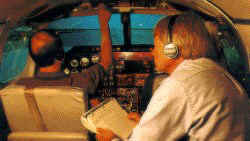 The next day, the sim session concentrated on IFR procedures. The lesson planconsisted of making an instrument takeoff, flying a short IFR X-C to an airport less than100 nm away, and shooting a series of instrument approaches and missed approaches. Theexercise included some holding, a DME arc, some NDB intercepts and tracking, and finallyan ILS to a landing. We knew we could count on an engine failure at some point in theflight, too.
The next day, the sim session concentrated on IFR procedures. The lesson planconsisted of making an instrument takeoff, flying a short IFR X-C to an airport less than100 nm away, and shooting a series of instrument approaches and missed approaches. Theexercise included some holding, a DME arc, some NDB intercepts and tracking, and finallyan ILS to a landing. We knew we could count on an engine failure at some point in theflight, too.
Ted went first once again, and I observed. After yesterday's performance, I was sure Icould learn a thing or three by watching him handle the challenges of this lesson. Boy,was I in for a shock.
Ted's performance was simply awful! He busted altitudes, failed to read backclearances, turned left when he should have turned right, missed step-down fixes onapproach, got totally lost at one point, and nearly lost control of the aircraftaltogether when the instructor threw a double alternator-out failure at him.
I couldn't believe it. This guy would have flunked an instrument rating phase check,much less an ATP checkride! How could a full-time career pilot with umpty-ump thousandhours and an incredible aptitude for flying the airplane turn out to be so awful at flyingthe system? I was flabbergasted.
On reflection, however, it became obvious to me what Ted's problem was: His cockpitdiscipline was atrocious. When ATC gave him a heading, he read it back but never set itinto the HSI heading bug or even wrote it down. He never used the sim's fancy altitudealerter, either, nor did he write down assigned altitudes or frequencies. He never triedto use the autopilot, even when he was faced with troubleshooting an electrical problem.He made no effort to set up his nav radios ahead of time, or to stay two or three stepsahead. Instead, he tried to keep everything in his head. He flew entirely in"reactive mode," not thinking about what was coming next until the last possiblemoment.
The result was that he flew the mission just barely hanging on by his mentalfingernails, so to speak, and it didn't take much to put him way behind the airplane. Hadit been a real flight rather than a sim, it would have scared the heck out of me.
Ted turned out to be living proof of what the Battelle/NASA researchers found more thana decade earlier. When it comes to SPIFR, hours and experience don't count. What doescount are good cockpit systems and procedures. Ted's procedures were simply awful, and hefailed to use the cockpit resources (autopilot, heading bug, altitude alerter, even penciland paper) that were available to him.
So ask yourself: Are your SPIFR procedures the best they can be? Do you use all thetools available to avoid screwing up? Or do you recognize a little bit of Ted in yourflying?

